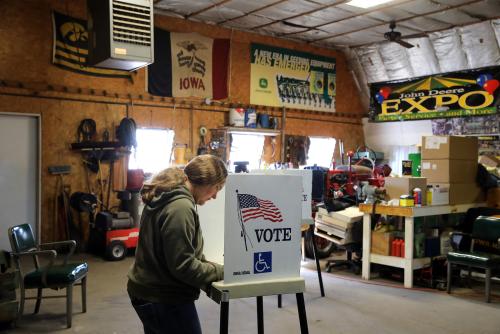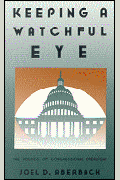A new Gallup survey released today suggests that President Trump is losing ground in many areas he won in 2016. If this trend is not reversed, Republicans may find themselves hard-pressed to defend the congressional seats they hold in these areas.
Mr. Trump continues to hold the advantage in four of the 13 community types identified by George Washington University’s American Communities Project—evangelical centers, white working-class areas, rural America, and LDS (Mormon) enclaves. Since the beginning of his administration, however, his margin has shrunk in all four—by 12 points among evangelicals, 20 points in working class areas, and eight points in both rural America and Mormon enclaves.
Even more worrying for Republicans, the president has lost the advantage he once enjoyed in four other community types, including the middle suburbs and the exurbs, both crucial political battlegrounds. Mr. Trump’s approval rating now stands at -8 in the middle suburbs and -9 in the exurbs. As Gallup describes these areas:
- The middle suburbs are the “blue-collar counties based primarily in the industrial Midwest that swung heavily to Trump in November.” The president won these counties by 13 points, compared to a much narrower two-point edge for Mitt Romney.
- The exurbs, which have higher incomes and more college degrees than both the national and GOP averages tend to be representative of the Republicans’ “establishment core.”
Georgia’s 6th Congressional District is a good example of the latter community type. In the 2014 mid-term election, Republican Tom Price prevailed by 32 points. In 2016, despite the characteristically higher Democratic turnout for presidential elections, he won by 23 points. In the June 2017 election held to fill the seat he vacated to become HHS Secretary, Republican Karen Handel held the seat by only four points.
To be sure, open seat contests tend to be closer than those involving incumbents. The Democratic Party threw everything it had at this race. And Donald Trump had won the district by only one percentage point, compared to Mitt Romney’s 23-point victory in 2012. Still, the 10-point decline in the Republican congressional vote share would be enough to flip other exurban districts where the parties are more evenly balanced.
History suggests that mid-term elections are shaped by two key variables—the incumbent president’s popularity and the relative enthusiasm of the respective party’s core voters. Mr. Trump’s declining popularity in key areas may be a problem that Republican congressional leaders are powerless to address.
But the waning enthusiasm of their base suggested by other survey research reflects congressional Republicans’ failure to act decisively in the areas their voters care about the most. Their legislative agenda is more than a wish list. For their core supporters, it is a set of promises that Republicans now have the power to honor. If they don’t, November 2018 will be very different from November 2016.
The Brookings Institution is committed to quality, independence, and impact.
We are supported by a diverse array of funders. In line with our values and policies, each Brookings publication represents the sole views of its author(s).











Commentary
Polling Spotlight: Trump’s latest approval numbers spell trouble for Republicans in 2018
July 13, 2017